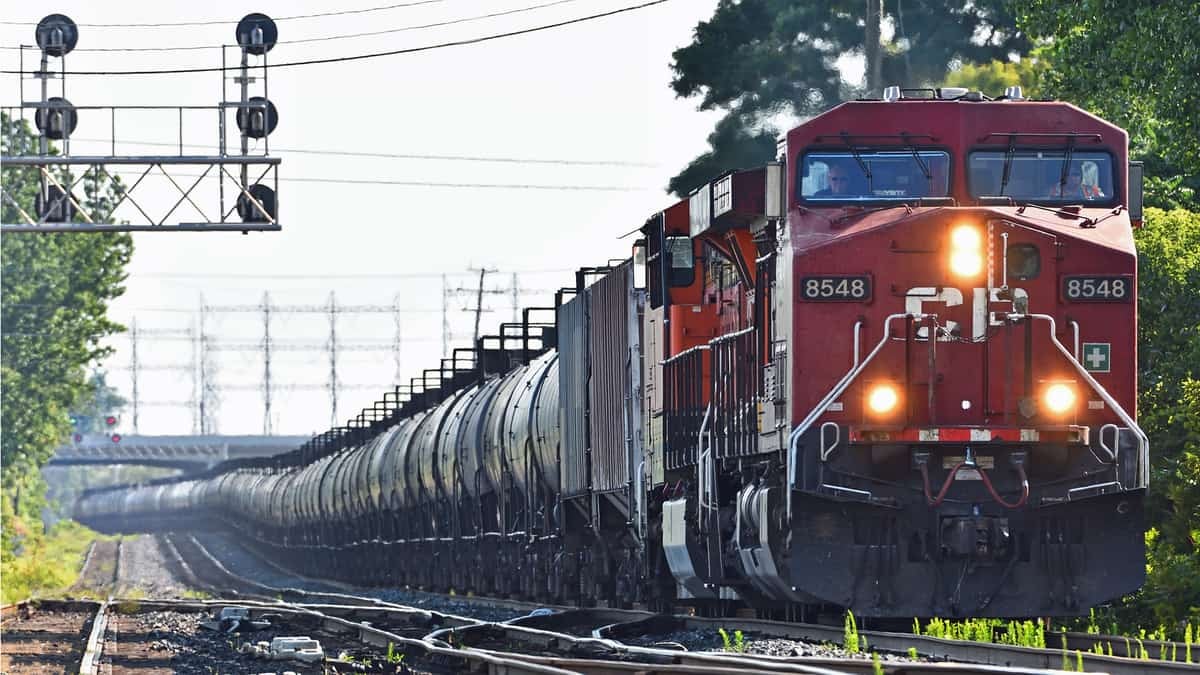The Canadian government has revised its temporary restrictions on speed limits for freight trains carrying dangerous goods, allowing trains to move faster.
The agency defines dangerous goods as commodities such as crude oil, liquefied petroleum gas, gasoline and ethanol.
The revised speed restrictions, which were issued on Feb. 16 and will be in place until April 1, are in response to a fiery Feb. 6 derailment of a Canadian Pacific (NYSE: CP) train carrying crude oil. The Transportation Safety Board of Canada is still investigating the cause of the incident.
Transport Canada now has upped the speed limits depending on the makeup of the freight train. Higher-risk trains, which are unit trains consisting of tank cars loaded with a single dangerous goods commodity moving to the same destination or trains that have 80 or more tank cars containing dangerous goods, can now travel at speeds of 25 miles per hour (mph) in places where there are no track signals. In metropolitan areas, those trains can travel at 30 mph or 25 mph if the train is traveling in non-signal territory.
The speed limit for “key trains” has been revised to 35 mph in metropolitan areas and 40 mph everywhere else. Key trains are trains carrying 20 or more railcars of dangerous goods or one or more cars of toxic inhalation gas.
“Transport Canada officials have worked diligently with large railway companies to further assess the causes of recent derailments, and to develop plans to address the areas of greatest concern,” Transport Canada said. “As a result of this work, new measures are being implemented effective immediately to reduce the speed of the higher risk key trains traveling through areas of greatest concern.”

Following the Feb. 6 incident, the government had initially ordered trains hauling 20 or more railcars of dangerous goods to slow down 20 mph in metropolitan areas and 35 mph everywhere else.
Transport Canada also said on Feb. 16 that it is working with the railways to develop a more comprehensive set of safety measures, including permanent measures. The measures will target track infrastructure maintenance and renewal, winter operations, safety practices and potential other safety-related actions.
Canadian National (NYSE: CNI) said it supported the revised Ministerial Order, which the company said takes into account its investments to equip mainline tracks with automated signaling technology.
Canadian National (CN) also said the changes will enable the railway “to recover more efficiently” from protesters blocking portions of CN’s rail track. Protesters in support of a First Nations’ group’s objections over the location of a proposed pipeline in British Columbia have been blocking portions of Canada’s rail network over the past week, causing CN to shut down its eastern operations and VIA Rail to cancel much of its passenger rail service. The blockades have also disrupted service on CN’s western operations.
“We are committed to working over the next several weeks with Transport Canada on recommendations to increase overall safety by reducing derailments,” said JJ Ruest, president and chief executive officer at CN. The ruling “will allow us to use our capacity to recover in the Western region as we resume the delivery of our customers’ goods that are important to the everyday lives of Canadians and the Canadian economy.”











